Topic" VR360 narrative is more theater-oriented than movies? New Possibilities for White Fear History Exhibition: Interview with Director Chen Xinyi, Technical Director Quan Mingyuan, and Art Director Tu Shuofeng
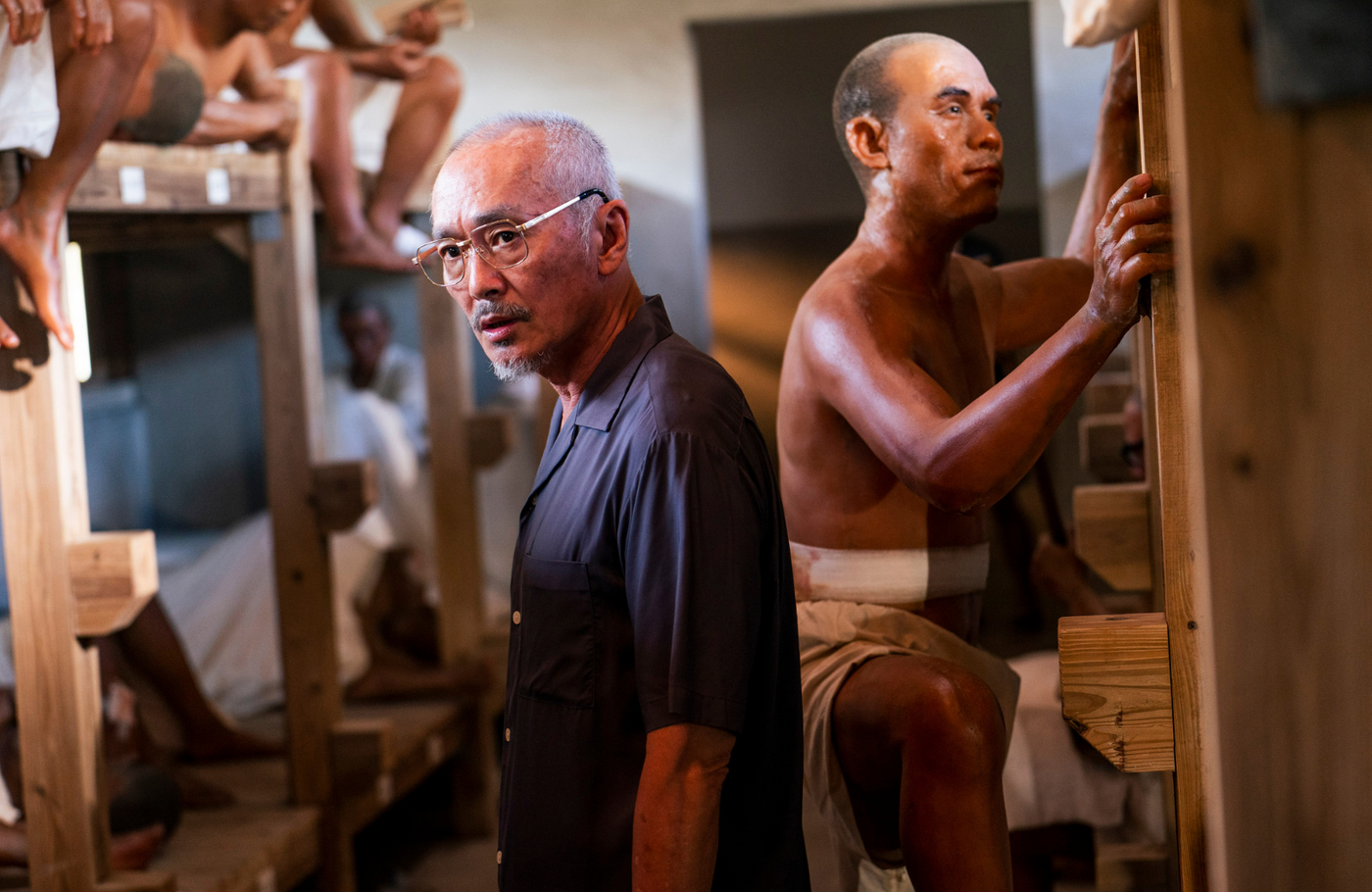
Interview and writing| Li Xiaomeng (literary worker)
Actor Lin Ju plays a political victim in "The Man Who Can't Leave", still at the Wax Museum of the Human Rights Park in Green Island. (The photos in this article are provided by Walker Image, director Chen Xinyi, and photographed by Li Xinzhe)
Director Chen Xinyi, whose works always contain strong humanistic care and reflect the current social situation, stood out from the 30 shortlisted works with the VR360 immersive work "People Who Can't Leave" in September this year, and won the 79th Venice Immersive Competition (Venice Immersive Competition) ) unit's Best Experience Award (Best Experience) is the highest honor in this unit. The content of this work combines the oral and personal experiences of many political victims of white terror, and reproduces the sad song of the times under the authoritarian system through the theme of an undeliverable suicide note.
When Chen Xinyi took the stage to accept the award, he first thanked the National Museum of Human Rights, and also thanked the team for their nearly 2 years of hard work to jointly create this immersive work that profoundly describes the situation of political victims of Taiwan's white terror era. "This VR is about the ancestors of the 1950s who sacrificed for their ideals and freedom. It was these ancestors who gave us strength, and we will continue to carry on that spirit," she said. The work was well-received at the Venice Film Festival and was included in the list. 2022 Kaohsiung Film Festival VR Competition.
After the Venice Film Festival, Openbook invited Chen Xinyi, the VR technical director Quan Mingyuan and art director Tu Shuofeng of "The Man Who Can't Leave", and asked them to share the hardships behind shooting immersive works with VR360 technology, and explain that VR is the wave of the times. Cutting-edge new media, how to narrate? How can it become a media carrier that content creators can use in the future? What development can be expected in the future?

When Chen Xinyi appeared, another interview had just ended. She has a neat attitude. While saying hello, she hurriedly typed back messages with one hand on her mobile phone. Her tone was slow, her eyes were sharp, and she did not see the tiredness of returning from Venice a while ago; art director Tu Shuofeng said with a gentle smile that he called him "red bean". , while the VR technical director Quan Mingyuan is focused and serious.
The cooperative lineup of these three is not the result of "People Who Can't Leave". Four years ago, at the invitation of the VR Film Lab at the Kaohsiung Film Festival, Chen Xinyi published the first VR360 experimental work "Afterimages for the Future", which is the crystallization of the three people's joint cooperation. Tu Shuofeng and Chen Xinyi got to know each other 15 years ago when they filmed the movie "The Wandering Dog Man".
Quan Mingyuan explained that, unlike the current Kaohsiung Film Festival VR competition, which is based on the collection of pieces, Xiongying took the initiative and invited several directors with the most potential to try VR360. Chen Xinyi was one of them. "Afterimages Left to the Future" was co-created by Chen Xinyi and choreographer Zhou Shuyi, and 11 dancers were invited to participate to express the indescribable life fragments of sensory memory through body language. The 18-minute experimental work explores how VR technology creates the overlap of vision and perception, as well as the emotional expression in the face of vanishing things.
➤Like coming in person, reimagining the viewing angle: VR sociality makes Quan Mingyuan leave the animation industry
Mingyuan Quan has been interested in "how to three-dimensionally visualize things" since he was a child. His profession is animation. In 2005, he won the highest honor in the global animation industry - the American ACM SIGGRAPH Computer Animation Exhibition Electronic Theater Audience Choice Award. In 2010, when he was still studying at National Taiwan University of Science and Technology, Quan Mingyuan was invited by director Chen Yiren to join the Xiancao Imaging team and became a co-founder. After 4 years, he left the animation industry and devoted himself to VR photography.
VR photography is the most important basis for immersive works. After wearing a VR headset, the experiencer can have a realistic body sensation and interact, explore and manipulate in the virtual world. Quan Mingyuan once introduced Felix & Paul Studios, the founder of stereoscopic VR creation media, on Facebook, how to show works with moving narrative and picture levels through mature stereoscopic VR works in the era of flat VR when others were shooting indiscriminately and with poor quality, " Let the audience feel that they are in another time and space, and can really convey the emotions and emotions of the performers to the audience." This inspired him to turn the helm towards VR in the sea of life.
"When I read Felix & Paul Studios's work, I took off the VR headset with tears in my eyes. I was shocked for a long time. After I recovered, I regarded stereoscopic VR as my belief, and I decided to embark on the road of no return to study stereoscopic VR." As a Taiwanese A pioneer in the study of VR, Quan Mingyuan started learning from scratch and created a set of systematic processes and development technology tools, from shooting, layout, post-production to inspection effects. During the process, he and the team kept on trial and error to master the know-how and explore the lens language of VR. and narrative logic.
The predecessor that Quan Mingyuan followed was Chris Milk, the co-founder and CEO of Inside, an American virtual reality technology company. In 2015, Milk once mentioned in a TED talk speech, "Virtual reality is the ultimate empathy machine (the ultimate empathy machine)", the characteristics of VR media are not only used in the game entertainment industry, but more importantly, make The audience "visits different corners of the world, sees different social classes, and develops empathy for unknown social issues." This kind of thinking has a profound impact on Quan Mingyuan's view of the social nature of VR applications.
In 2017, the Kaohsiung Film Festival established the "VR Film Lab" to encourage Taiwanese creators to shoot VR films through grants. Quan Mingyuan and director Xu Hanqiang collaborated with director Xu Hanqiang on the 10-minute VR360 work "Almighty Yuanshengong Transformation King", which presented an unrestrained, avant-garde and funny Taiwanese folk comedy, which was selected for the 2018 Sundance Film Festival. This also planted the seeds for him to become a regular partner of VR Film Lab every year and to cooperate with Chen Xinyi in the future.
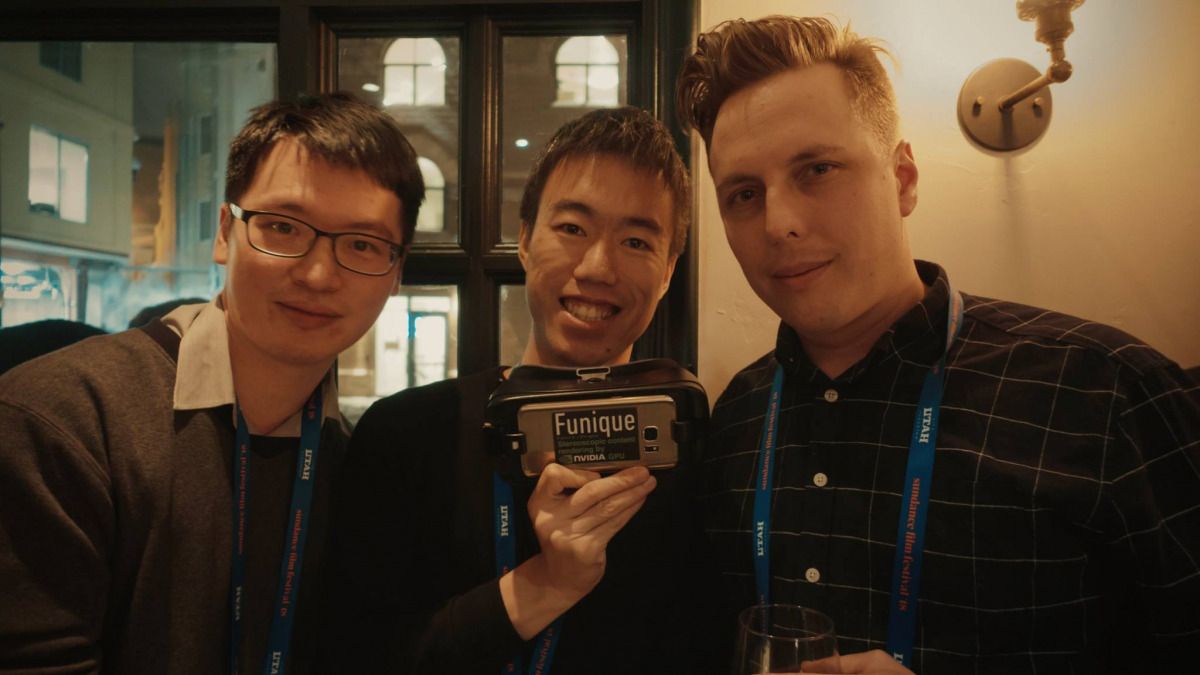
➤The film team's VR exploration: From "Afterimages Left for the Future" to "The People Who Can't Leave"
Few people know that "The People Who Can't Leave", which will shock the world in 2022, may have come out earlier than the "Afterimages Left to the Future", which was the first cry. After receiving the invitation from Xiongying that year, Chen Xinyi wrote 2 scripts in different directions in one go. One is from the predecessors of the Wax Museum in the Ludao Human Rights Park, trying to explore the life theme of political victims; the other is based on the dancer's Physical representation, exploring issues of memory and death.
"I really wanted to shoot the theme of Green Island, but everyone else chose Zhou Shuyi's script." Chen Xinyi smiled wryly. Tu Shuofeng added, "At that time, I was worried that VR was a new medium, and we were not so familiar with it; and speaking of history, the team might face more tests." Yes, the National Human Rights Museum also came to me after seeing "Afterimages for the Future" that I filmed first, and it just so happened that the story of Green Island came in handy."
The theme of "The Man Who Can't Leave" has a more historical depth. The text must be inspected and researched first. The script also adds dialogue and scenes. Unlike "Afterimages Left for the Future", which is abstract in theme and centered on science fiction imagination, the scale and level are different. First, the previous homework is also very different.
Chen Xinyi, who had only been exposed to a few conceptual VR works before, rolled up his sleeves and started to study VR characteristics after he decided to produce the VR360 work "Afterimages Left to the Future". She extensively browsed YouTuber's selfie video of a live VR experience, observing the difference between what the experiencer explored and paid attention to: "It's like doing human behavior research to see what people care about in the VR world."
For Tu Shuofeng, the preparation of "Afterimages for the Future" was also an opportunity for him to understand how VR combined with art can be implemented. The scope of duties of film art can be said to be full of mountains and seas: confirming the style and tone of the film before shooting, then the aesthetic setting, scene design, furnishings, props, plane, texture, and final checks are also required during on-site execution, so that each picture conforms to the The film sets the tone and adjusts accordingly.
Tu Shuofeng explained that in general, the adjustment and variability of the filming scene can be very large, but VR360 production is not the same: "When the VR medium is actually filmed, it is very necessary to repeatedly check any dimensions, distance, height on the scene. The setting, the distance between characters, changing scenes, and every aspect of the space should be taken into account at the same time. Even the actual effects that the post-production resources and special effects can provide must be discussed before the pre-shooting process, so that they can be implemented. There is no way to wait. After shooting, there are temporary changes, and general video and film works do not have such strict constraints.”

➤The theater-like characteristics of VR narrative: scene, light source, interactive contact and invisible special effects
In order to create a realistic immersive experience, Tu Shuofeng proposed that in addition to aesthetic considerations, art should consider three aspects: the sense of space that extends the authenticity, the rationality of the ambient light source, and the perspective that can connect the experiencers. : "The technology of VR live-action shooting has certain limitations, and the effects generated within or outside the distance are completely different. This must be considered in the art setting. In addition, VR360 presentation requires connection and stitching of perspectives. Pay attention to the actual shooting, try to avoid the characters and objects in the position that needs to be stitched.”
Tu Shuofeng then explained the difference between the lighting in VR360 and the film: "When shooting a 360-degree scene, the actual shooting space has no place to hide the lamps, so any lighting from above must be given a reasonable Sexual language and performance methods, such as stacking drama.” The reason for this is to take into account that if the details of the virtual world are not well grasped, causing a significant gap with the real world, the audience will play, “We must minimize the audience in the virtual world. The space creates an emotion of confusion, suspicion.”
Chen Xinyi also emphasized: "VR360 is not like a movie, it cannot be edited and needs to be precise." During the conversation, she often compares VR to a theater to facilitate understanding: "Compared to a movie, it is actually more like a theater, because the theater is in the same place. Space advancement, through lighting and scene changes, a time-space is switched.”
When preparing for the filming of "The Man Who Can't Leave", there were only 3 days for the crew and actors to be free. The team spent 1 day filming on Green Island (and encountered rain) and 2 days into the studio to shoot. Fortunately, with the concerted efforts of everyone, this almost impossible task was achieved. "We really did a lot of pre-production, including how long the dialogue for this scene should be, how long to push the track, how fast the track should be pushed, I came like this, the camera came... All the timings on the set must be well designed. "Chen Xinyi said.

➤Scheduling of 3D performances: complicated and requires absolute precision
At the moment of the interview, Chen Xinyi directly asked Tu Shuofeng to show the on-site floor plan file, and saw that the studio became a box, and the relative distance and position of each person were marked with dots and lines. Each page contains only one scene setting, and each scene design is different.
Therefore, we can imagine that a filming that cannot be edited and must not have the slightest mistake on the spot, its work is labor-intensive, and all kinds of restrictions make people nervous just listening to it. On the other hand, the spatial characteristics of VR must allow different dimensions and scenes to appear at the same time, surrounding the audience. Facing such a highly complex scene, Chen Xinyi shared her way of handling the script: "The space is different, I will write it separately, A, B, C, and even D below. I will tell you, what is A plus C? , the whole script is very complicated.”
"The Man Who Can't Leave" has a bridge segment that presents three-dimensional scenes at the same time. The experiencer looks forward, the main picture is Ah Qing and other political victims, hanging like pigs, tortured and scarred, and it is unclear whether they still have a breath. There was a dazzling white light of forced confession in the back, and the coercive words echoed heavily. I saw more and more people hanging, and the picture made the palms sweat and pain. Looking to the right, it was A Qing's wife, Jiamei, who was anxious. She walked back and forth, anxious in her heart, and wanted to meet A Qing, but she saw her husband's name was listed on the announcement that she was accused of "attempting to subvert the government and executed according to law." Looking down, there was a big hole in the ground, and the lower level was the other political victims who were imprisoned and gathered to look up like a rat clan.
Note: "MAUS: A Survivor's Tale" is a work serialized by Art Spiegelman from 1978 to 1991. It is a classic of non-fiction comics, and it is an exception to the themes related to the Nazi Holocaust. do. The term "rat" symbolizes the contempt and discrimination against Jews by Hitler and Germany during World War II. The author's racial cleansing in the real world has been transformed into a metaphor of a cat and a mouse, which is extended to be a group symbol of the oppressed in this article.
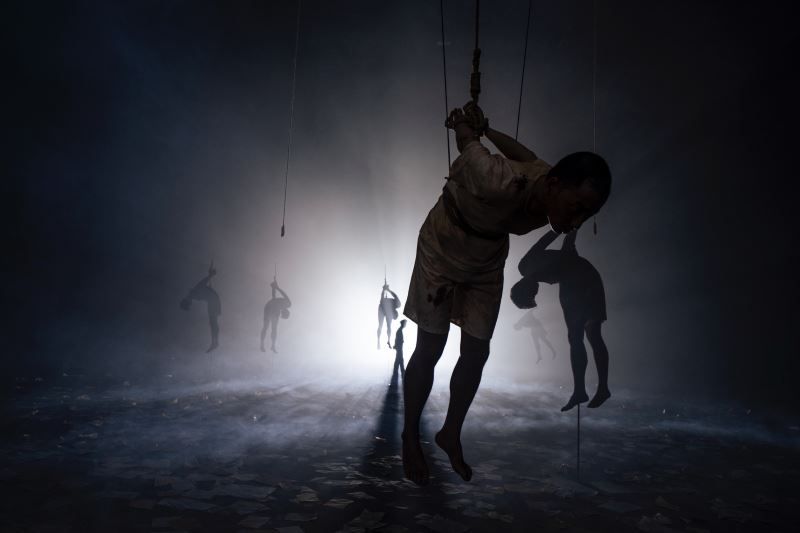
It is conceivable that such intricate preparations and post-production efforts must have been carefully arranged and discussed, and then the calculated scene scheduling was able to produce a shocking dramatic tension. Chen Xinyi said, "In fact, in the end, we will find that the audience is the only omniscient one." In the process, we seem to be reading a three-dimensional literary work with multi-voice narrative with our five senses, entering the period of Taiwan's white terror in the 1950s, from victims, friends to The life core of the different roles of family members and descendants.
Even if it has been deployed ahead of time, no one on the scene knows what the shooting results will be. Quan Mingyuan pointed out that VR cameras are usually composed of many lenses, and the shooting information requires a lot of post-processing special effects by technicians in order to produce high-quality stereoscopic images that the audience sees. "The better you do it, the better the audience will be. No flaws can be seen, this is what we call 'invisibility special effects'."
However, how to convince the audience to trust virtual reality is another challenge.
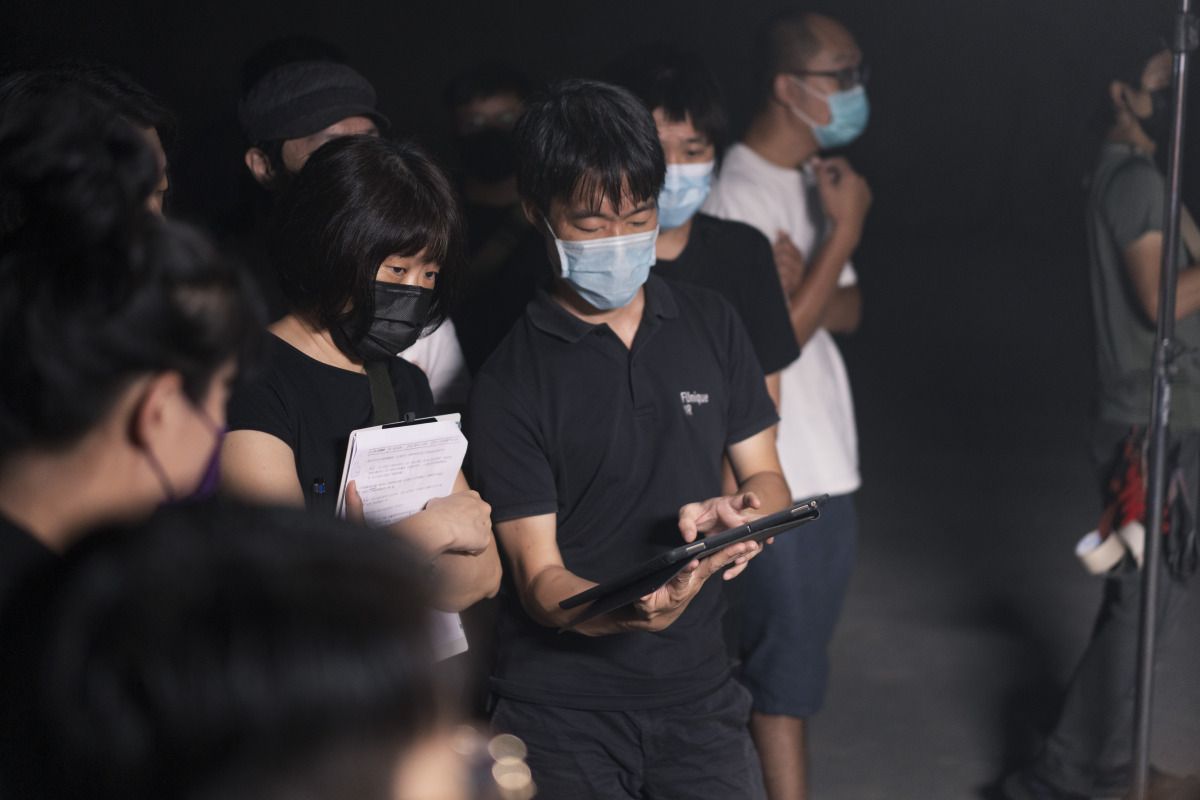
➤ How to make it happen by chance? Can't narrow the angle of view like a movie, but can insert intertextual context clues
"When a certain recoisement takes place between seeing and seeing, between touching and touching, between one eye and the other, between hand and hand, the human body arises; The person-being ignited by the sparks between the sensed, the human body appears; when the fire, which will not cease to burn, frees the body from any accidental act that cannot be achieved by accident, the human body appears... …”
--Merleau-Ponty, "The Eye and the Heart"
How to create an immersive experience that summons somatosensory and empathy? The key is to evoke a sense of body through design. Chen Xinyi took the interaction in "Afterimages Left for the Future" as an example: "Zhou Shuyi's match is only 50 cm long, and 50 cm is what people will feel (very close), and the fire is very real, you will want to Go and touch." She also mentioned Kun Bo who walked towards the audience and talked and interacted in "The Man Who Can't Leave": "Eye contact is very effective, and eye contact is also part of the design. Kun Bo's eyes have a kind of Strong feelings make people connect.”
Of course, it’s not just about putting in technical design. Chen Xinyi believes that in order to produce a real sense of body, there must be a corresponding plot, and effective information, useful contacts and hints must be provided. After all, after the audience puts on the VR headset, they can explore and watch to a limited extent. At this time, even if the director cannot limit the audience's focus like a normal movie lens, he can put useful clues or hints in the space to increase the realism of the scene. It can also strengthen the audience's familiarity with the characters and narrative state.
What is effective and useful? "It works because it draws the audience into it. When Kun Bo comes in, whether you feel oppressed, want to step back, or want to touch the person to see if the person is real, it has already triggered a sense of body. Through the plot design, it will make people feel that they are really in that space. With this feeling, the things below will be established.”
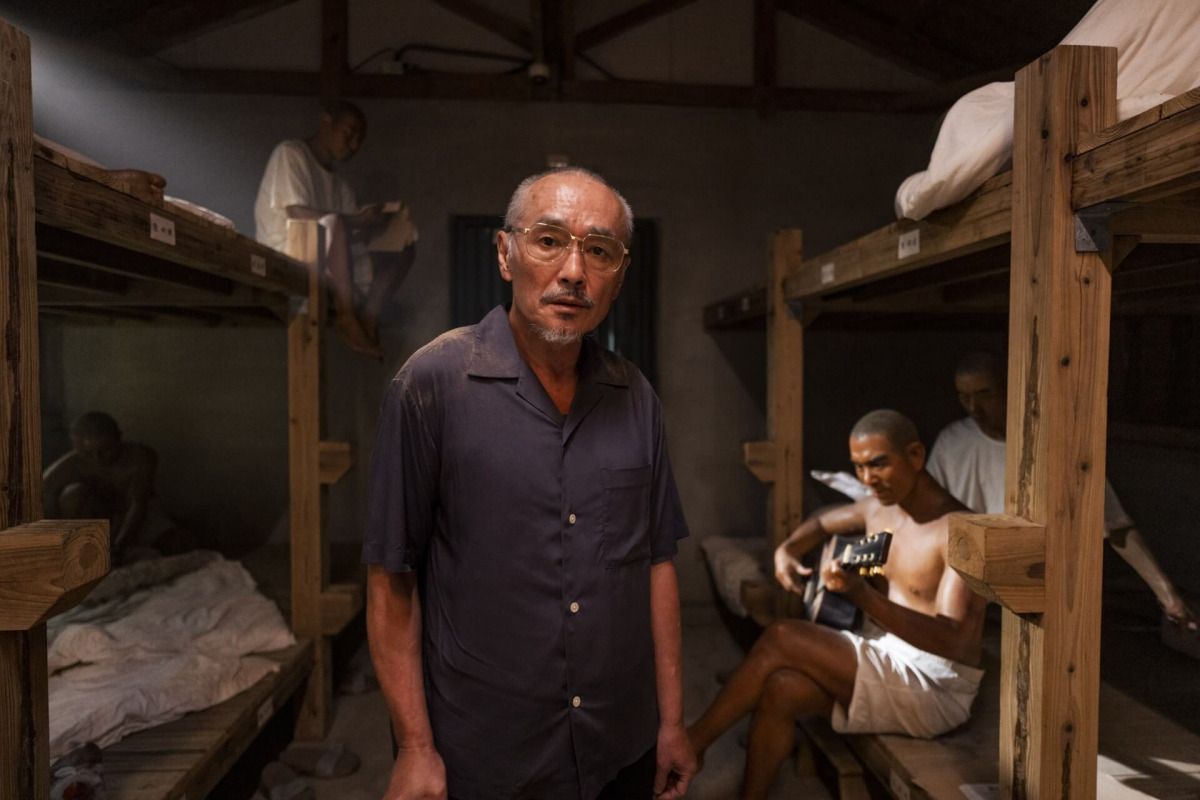
➤ Post-scenario disclosure with retreat: a cutscene design that incorporates the audience's preset psychology
The experience process of "The Man Who Can't Leave" is like watching a stage play, but the original stage distance has been erased, and every moment is close to "eyesight", bringing the empathy of the scene. What is interesting is that "The Man Who Can't Leave" is similar to the beginning of the story of the wax museum guide film, and when the scene is changed, it seems to enter the digital production backstage, and see the flashing fluorescent green grid in the virtual space. It is also a team. The ingenuity of trying to let the audience off their guard.
"I don't want the audience to be in the 1950s as soon as they come in, so they feel like they are watching a historical story, someone else's story." Chen Xinyi showed a smug look, "The way to get you in is to pretend to be watching a wax figure first. The museum tour guides you to let your guard down, instead of telling you at the beginning, I want to tell a story in 1950, but suddenly it travels through time and space inexplicably, why did the wax statue become a real person?”
Chen Xinyi's way of guiding the audience is to deliberately design a path with meta-meaning, "deliberately let the matter of 'you are watching VR' is also included in the meta, but it becomes a kind of use." But in the final plot, the audience still needs to be drawn. Going back to modern times, let the audience feel that the experience of political suffering in the 1950s is not over in the past, but is not over yet.

➤ How to make the audience feel imprisoned: a design perspective
Tu Shuofeng also shared that after "Afterimages Left to the Future", the team is also thinking about how to break through "The People Who Can't Leave": "The Afterimages Left to the Future is relatively clear, and the main consideration is how to guide the audience. Intuitive response of sight and body; in "The Man Who Can't Leave", the team actually had a consensus and wanted to explore together how to frame the audience in the narrative situation. Therefore, the perspective design this time ultimately hopes to make the audience feel real Imprisoned or framed in this space, even surrounded.”
Here, the seniors who died 70 years ago due to political persecution and could not leave the state of unfreedom, and we who now experience the pain through VR360 as a carrier, and who cannot leave now, have come together.
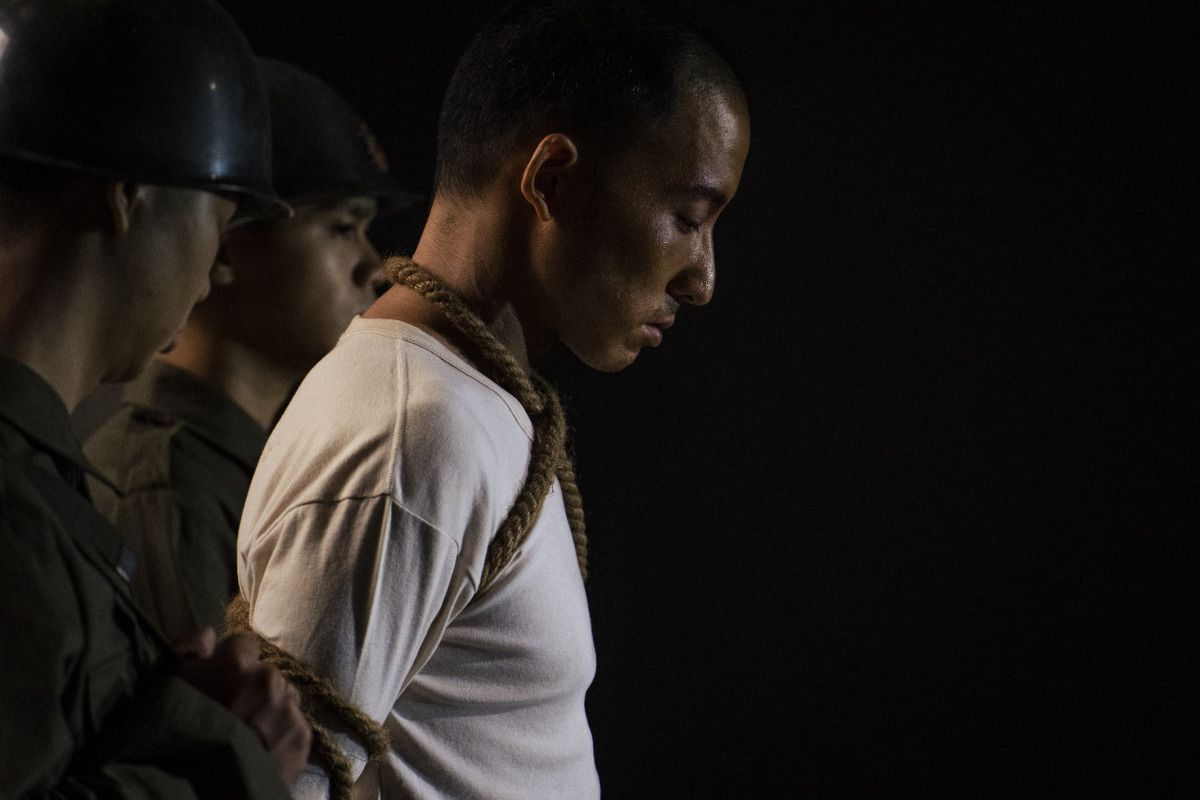
➤ Where time freezes: read white horror-themed publications
Chen Xinyi recalled that when the Ludao Human Rights Cultural Park was first established, a wax museum was planned. She imagined the frozen figures of the seniors of the political victims, and kept it in her heart, always hoping that one day she could use it to shoot something. "The feeling that the time is condensed there is very strong."
Chen Junhong, the former director of the National Human Rights Museum, and He Youlun, the project assistant, were deeply shocked after experiencing "Afterimages Left for the Future". They believed that the nature of the media was very suitable for matching historical themes, so they invited Chen Xinyi to make VR360 works with the theme of white terror. In order to highlight the heavy and regrettable life experience of political victims, not the experience of a single person but the product of the times, Chen Xinyi read a lot of oral histories and suicide notes, and integrated the personal stories of different predecessors as texts.
The bibliography she has read for this purpose includes memoirs of political victims, interviews with family members, representative literary anthologies, and academic research papers, including: "Undeliverable Will", "Liu Ma Gou No. 15", "Let the Past Be" Be the moment: Selected Taiwanese White Horror Novels, "Memories and Witnesses to White Horrors", "Prisoner Outside the Prison", "Spring in the Saddle Vine" and Lin Chuankai's essay "Burning the Island Chain Steel on Fire, Until It Dies - Revisiting "Green The Rebellion Case of the New Island Student Training Office" (1953-1956)".
"These books gave me a great sense of immersion, because the content is actually the tone of the seniors at that time. Just listening to some stories makes me want to cry. For example, the seniors of political prisoners and victims entrusted letters to his inmates, and the inmates sent them out first. To this man's father, but the family was afraid that the letter would become evidence, so they burned it." Chen Xinyi said sadly.

➤ How is VR360 narrative possible? Explore the relationship between space and viewer
"When I was doing VR, I kept asking myself: Why do I want to do VR? I definitely don't want VR for VR's sake." Chen Xinyi mentioned that when he was an audience, he didn't like the design of being forced to respond, "I just don't want to interact with it. .” During the preparatory period, seeing some VR works, Chen Xinyi would sometimes be confused, “It would be good to make a movie or a documentary on such a subject.”
As Cai Mingjun in his book "Tuina, A Review of Curatorial Practice: Interview Project of Hou Junming's "Body Map", he quoted American curator Mary. Jane. According to Mary Jane Jocob: "When creating space for the viewer, it is not only necessary to consider the physical space, but also the psychological space, and to reserve enough space and distance, so that each viewer can find it. The relationship between myself and my work.” ( What Makes a Great Exhibition?, Philadelphia Exhibition Initiative, 2006)
"VR is a brand-new medium, and creators should find out what its language is, and use the characteristics of virtual space to make the audience's viewing a new meaning." For Chen Xinyi, the logic, system and relationship between VR and film Her specialties are completely different, so she strongly disagrees with seeing VR as an extension or branch of movies: "A movie has shots, cuts, and its rhythm, and you can use a lot of film skills to adjust your brain, allowing you to focus on 2D images. But VR is not like this at all. It is more about mobilizing your body sense, and you can experience it after entering it.” She gave an example, VR experience is more like a dream, and after the end, there will be a kind of confusion about whether you are in a dream or not. Waking up in a trance.

The reason why she chose VR360 instead of filming for political victims is because Chen Xinyi believes that VR is most suitable for dealing with issues of memory and death, and she also wants to make a breakthrough herself: "I want to challenge the so-called VR360 narrative. VR360 really does not How can I tell the story well? In fact, from 2017 to 2022, fewer and fewer people are shooting VR360 videos. Most people would rather play games and interact, otherwise the audience will not watch it quietly." She said unwillingly. : "But is that really the case, is VR360 narrative really impossible?"
Therefore, Chen Xinyi not only compiled the literature and data into a smooth and emotional script, the team supported visual presentation in art and VR technology, and added musical elements, which not only echoed and reproduced historical facts, but also made the audience feel strong emotional tension.
➤The experience of Taiwanese society is also a universal issue
The music that appeared in "The Man Who Can't Leave" includes: "Battle Song of Youth" by the Mai Lang Singing Team in the April 6 Incident, "Song of Rest" sung by the inmates in unison for the victims who are about to be executed, and at the end, the Haibizi Theatre Troupe Playing the role of seniors who have experienced white terror, holding black and white photos of the victims, they marched like a funeral procession and sang "A united people will never be defeated".
Let "United People Never Be Defeated" appear at the end, Chen Xinyi hopes to convey the power of resistance and anger through this: "The power of encouragement or the power of venting, because I don't want everyone to read it in the end, only I feel so pitiful for my seniors. I don’t want to let my emotions stay here.” During the screening at the Venice Film Festival, I was worried that foreign audiences would not be moved and unresponsive due to language or cultural barriers. "Fortunately, our worries are unnecessary, and there are too many viewers crying." Quan Mingyuan said with relief.
Chen Xinyi believes that this is also related to the popularity of "United People Will Never Be Defeated", "The issue of human rights is a matter of global concern, and this song at the end of the film will be used by any country in the world that has resisted authoritarianism and launched social movements. , so everyone will resonate very much. The final issue of transformational justice in this film is actually a global issue." She said that she hoped that after experiencing "The Man Who Can't Leave", the audience would have a personal feeling and let seniors pursue freedom. spirit can continue. Chen Xinyi said earnestly: "If this spirit is not continued, (tragedies) may still happen in the future."

➤The VR technology that evokes the ultimate human empathy should reflect and examine the core of creation
As for the future of VR360?
After several years of observation of VR interactive games and immersive works, as well as contact with Metaverse-based VR online real-time interactive performances, Chen Xinyi found that, in fact, if VR technology is used well, the process of exploration will not only "refresh your senses" ”, and also found that human beings will still have emotional instincts stirred after experiencing interaction: “Through our new exploration of this virtual world, we may be able to re-understand human behavior or emotions—not to manipulate, It has nothing to do with technology, but to find out what is the most precious core to human beings.”
This also made her reflect: Will such a design experience become more refined in the future? What is behind the arousing of human emotions? How can it be used in works?
At the end of "The Man Who Can't Leave", the experiencer is farther and farther away from the Haibizi Opera Troupe, who sings and sings at the seaside in the dark at night. With tears in his eyes, he returns to the starting point of the beginning, standing in the middle of the ocean washed by the waves. Looking up, there is Green Island, and there are stone steps leading to nowhere. The future is vast, and there is no trace of the future. A butterfly flutters its wings, light and fragile. Ah Qing once talked with Kun Bo about yearning for the freedom of butterflies.
This kind of setting is like Cai Kunlin and Chen Yingtai, the biographers of "Children from Qingshui", jointly recalled the scene mentioned by their close friend Cai Binghong: "Chen Yingtai said that Cai Binghong wrote a letter to the inmates in the military prison while waiting for the verdict. The letter mentioned that he had a dream in which he became a butterfly. He flew freely in the mountains full of rhododendrons.”
In 2018, Chen Xinyi wrote down her thoughts in a Facebook post: "If the audience's body is successfully summoned, where will this road go? What does VR want/give humans?" Said: "Because we don't know, that's why we keep exploring the possibilities of this medium, and we can get to where we are today, and we're here. Do you know what VR is going to give to human beings and where it's going? Where to go? I’m still thinking about it even now. This thinking will not stop.” ● ( The original text was first published on the official website of Openbook on 2022-10-20)
people who can't leave
The Man Who Couldn't Leave
Auxiliary 12+|Chen Xinyi|Taiwan|VR360|2022|Color|35min
★ 2022 Venice Film Festival Best Experience Award ★ 2022 Amsterdam International Documentary Film Festival
Synopsis
In the wax statue exhibition site where the political prisoners were held in Green Island, Kun Bo, a political victim, was telling the scene of that year. Following the footsteps of Kun Bo's guided tour, the audience seemed to travel through a time tunnel and experienced the story of Kun Bo and his fellow inmate Ah Qing in the 1950s. They seem to be frozen in time, guarding the promise and unable to leave, and waiting for the person who can make the story go on and on. "The Man Who Can't Leave" integrates the experiences of many political victims of white terror, travels through history and time with an undeliverable suicide note, and uses VR immersive experience to arouse different generations' empathy for this history and characters .
Director Chen Xinyi Singing CHEN
His works span films, documentaries, VR, and TV dramas, often focusing on people's living conditions and beliefs, using magical and realistic techniques and delicate narratives to establish a unique image language. His works have been shortlisted or awarded at more than 30 film festivals including the Berlin Film Festival and the Golden Horse Awards.
➠ 2022 Kaohsiung Film Festival. VR competition "The Man Who Can't Leave" Screening Schedule
★Recommended readings by the production team of "The Man Who Can't Leave"
Director Chen Xinyi
☆Extended reading on the topic of white terror
- Undeliverable suicide note: Remembering those lost in the age of terror, by Lin Yicheng, Lin Chuankai, Hu Shuwen, Yang Meihong, Luo Yujia, published by Chunshan, 520 yuan
- Liumagou No. 15, by Cao Qinrong, Zheng Nanrong Foundation, published by Shulin, 450 yuan
- "Let the Past Be the Present: Selected Taiwanese White Horror Novels", waiting by Guo Songfen, published by Chunshan, 1460 yuan
- "Memories. Witnessing the White Terror, by Chen Yingtai, Tangshan Publishing House, 280 yuan
- Prisoners Outside Prison, edited by Xu Xueji, published by the National Human Rights Museum, 1,200 yuan
- "The Spring of Saddle Vine", written by Chen Xinji, published by the National Human Rights Museum, 300 yuan
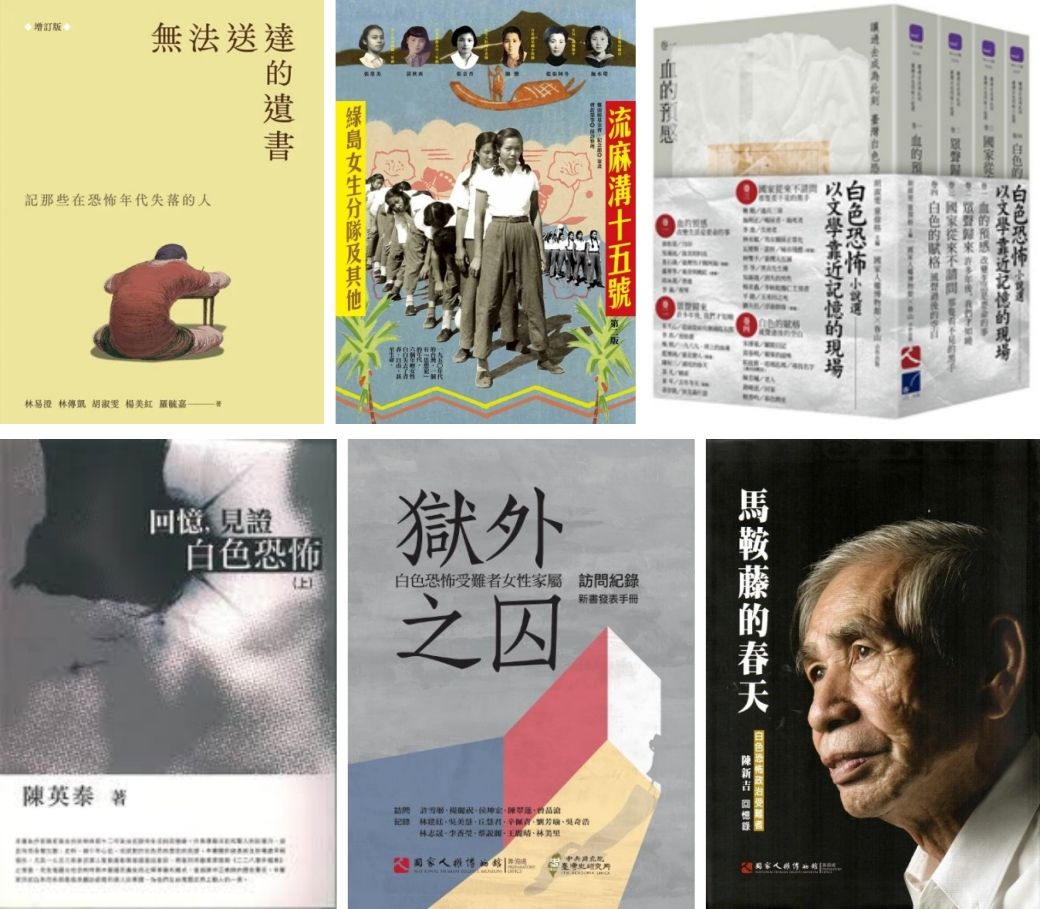
☆Classic reading that affects life
- Humiliation, written by JMCeetzee, translated by Meng Xiangsen, published by Tianxia
- "Deep River", written by Endo Zhou, translated by Lin Shuifu, published by Lixu, 320 yuan
- "Chunqin Copy", written by Tanizaki Junichiro, translated by Yang Xiaozhong, published by Sanlian, 440 yuan
- Selected Novels of Chekhov, by Carl G. Jung, translated by Ru Long, published by Laurel
- "The King of Chess, Tree King and Child King", written by A Cheng, Dadi Publishing, 200 yuan
- "Zhuangzi Reader", edited by Wenguo editorial department, published by Wenguo Book Company
- "The Man with Compound Eyes" by Wu Mingyi, New Classic Culture, 360 yuan
- "The Route of Sleep", by Wu Mingyi, Eryu Culture, 290 yuan
- "Son's Big Doll", by Huang Chunming, United Literature, 320 yuan
- One Hundred Years of Solitude, by Gabriel García Márquez, translated by Ye Shuyin, Crown Publishing, 450 yuan
- The Red Book, by Carl G. Jung, translated by Lu Mi and Liu Hongxin, Mind Workshop, 1,100 yuan
Art Director Tu Shuofeng
- "Tibetan Book of Living and Dying", written by Sogyal Rinpoche, translated by Zheng Zhenhuang, Teacher Zhang Culture, 520 yuan
- "China of Evil", written by Baudelaire, translated by Mo Yu, Zhiwen Publishing House.
- "Man and Its Symbols: The Essence of Jung's Thought" by Carl G. Jung, translated by Gong Zhuojun, published by Lixu, 390 yuan
- " Hieronymus Bosch Xl Taschen Fischier " (Book of Hieronymus Bosch), by Stefan Fischer, published by Taschen Deutschland GmbH+.
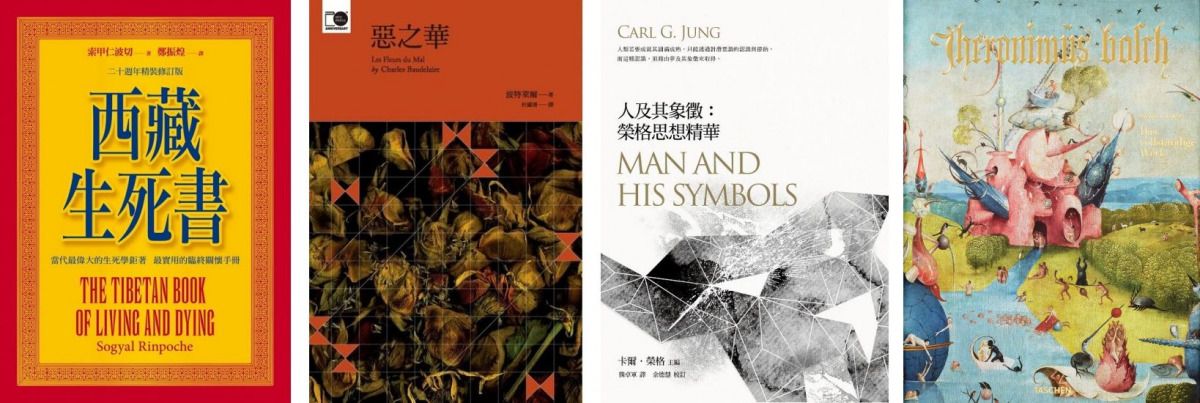
Quan Mingyuan, Technical Director of VR
- "Stop it, Mr. Feynman: The Story of a Science Urchin," Richard W. Feynman (Richard P. Feynman), published by the world, 500 yuan
- Li Jiatong's books and works ("Let the High Wall Fall", "Story Sixty-Eight", "Next Stop", "Stranger")
- Malcolm Gladwell's books and works ("Eyes-Opening: Gladwell's Imagination", "Anomaly: Where is the Line Between the Extraordinary and the Ordinary?", "Deciphering Stranger: Subverting the inertia of knowing people, seeing through the real human nature under the surface") , podcast program "Revisionist History"
- Books by Dan Ariely ("The Psychology of Money: Break Your Myths About Money and Learn to Spend Smarter", "Who Says People Are Rational!: Behavioral Economics for Consumer Experts and Marketers")

Like my work? Don't forget to support and clap, let me know that you are with me on the road of creation. Keep this enthusiasm together!

- Author
- More